- Home
- Haruki Murakami
Killing Commendatore Page 2
Killing Commendatore Read online
Page 2
“It’s up all by itself on top of a mountain, definitely not the most convenient location, but it’s a quiet place. That I guarantee for sure,” Masahiko said. “The perfect environment for painting. No distractions whatsoever.”
The rent was nominal.
“If the house is vacant, it’ll fall apart, and I’m worried about break-ins and fires. Just having someone there all the time will be a load off my mind. I know you wouldn’t feel comfortable not paying any rent, so I’ll make it cheap, on one condition: that I might have to ask you to leave on short notice.”
Fine by me. Everything I owned would fit in the trunk of a small car, and if he ever asked me to clear out, I could be gone the following day.
I moved into the house in early May, right after the Golden Week holidays. The house was a one-story, Western-style home, more like a cozy cottage, but certainly big enough for one person living alone. It was on top of a midsized mountain, surrounded by woods, and even Masahiko wasn’t sure how far the lot extended. There were large pine trees in the back garden, with thick branches that spread out in all directions. Here and there you’d find stepping stones, and there was a splendid banana plant next to a Japanese stone lantern.
Masahiko was right about it being a quiet place. But looking back on it now, I can’t say that there were “no distractions whatsoever.”
* * *
—
During the eight months after I broke up with my wife and lived in this valley, I slept with two other women, both of whom were married. One was younger than me, the other older. Both were students in the art class I taught.
When I sensed that the timing was right, I invited them to sleep with me (something I would normally never do, since I’m fairly timid and not at all used to that sort of thing). And they didn’t turn me down. I’m not sure why, but I had few qualms about asking them to sleep with me, and it seemed to make perfect sense at the time. I felt hardly a twinge of guilt at inviting my students to have sex with me. It seemed as ordinary as asking somebody you passed on the street for the time.
* * *
—
The first woman I slept with was in her late twenties. She was tall with large, dark eyes, a trim waist, and small breasts. A wide forehead, beautiful straight hair, her ears on the large side for her build. Maybe not exactly a beauty, but with such distinctive features that if you were an artist you’d want to draw her. (Actually I am an artist, so I did sketch her a number of times.) She had no children. Her husband taught history at a private high school, and he beat her. Unable to lash out at school, he took his frustrations out at home. He was careful to avoid her face, but when she was naked I saw all the bruises and scars. She hated me to see them and when she took off her clothes, she insisted on turning off the lights.
She had almost no interest in sex. Her vagina was never wet and penetration was painful for her. I made sure there was plenty of foreplay, and we used lubricant gel, but nothing made it better. The pain was terrible, and it wouldn’t stop. Sometimes she even screamed in agony.
Even so, she wanted to have sex with me. Or at least she wasn’t averse to it. Why, I wonder? Maybe she wanted to feel pain. Or was seeking the absence of pleasure. Or perhaps she was after some sort of self-punishment. People seek all kinds of things in their lives. There was one thing, though, that she wasn’t looking for. And that was intimacy.
She didn’t want to come to my house, or have me come to hers, so to have sex we always drove in my car to a love hotel near the shore. We’d meet up in the large parking lot of a chain restaurant, get to the hotel a little after one p.m., and leave before three. She always wore a large pair of sunglasses, even when it was cloudy or raining. One time, though, she didn’t show up, and she missed art class too. That was the end of our short, uneventful affair. We slept together four, maybe five times.
* * *
—
The other married woman I had an affair with had a happy home life. At least it didn’t seem like her family life was lacking anything. She was forty-one then (as I recall), five years older than me. She was petite, with an attractive face, and she was always well dressed. She practiced yoga every other day at a gym and had a flat, toned stomach. She drove a red Mini Cooper, a new car she’d just purchased, and on sunny days I could spot it from a distance, glinting in the sun. She had two daughters, both of whom attended a pricey private school in upscale Shonan, which the woman was a graduate of too. Her husband ran some sort of company, but I never asked her what kind of firm it was. (Naturally I didn’t want to know.)
I have no idea why she didn’t flatly turn down my brazen sexual overtures. Maybe at the time I had some special magnetism about me that pulled in her spirit as if (so to speak) it were a scrap of iron. Or maybe it had nothing to do with spirit or magnetism, and she’d simply been needing physical satisfaction outside marriage and I just happened to be the closest man around.
Whatever it was, I seemed able to provide it, openly, naturally, and she commenced sleeping with me without hesitation. The physical aspect of our relationship (not that there was any other aspect) went smoothly. We performed the act in an honest, pure way, the purity almost reaching the level of the abstract. It took me by surprise when I suddenly realized this, in the midst of our affair.
But at some point she must have come to her senses, since one gloomy early-winter morning, she called me and said, “I think we shouldn’t meet anymore. There’s no future in it.” Or something to that effect. She sounded like she was reading from a script.
And she was absolutely right. Not only was there no future in our relationship, there was no real basis for it, no there there.
* * *
—
Back when I was in art school I mainly painted abstracts. Abstract art is a hard thing to define, since it covers such a wide range of works. I’m not sure how to explain the form and subject matter, but I guess my definition would be “paintings that are nonfigurative images, done in an unrestrained, free manner.” I won a few awards at small exhibitions, and was even featured in some art magazines. Some of my instructors and friends praised my work and encouraged me. Not that anyone pinned his hopes on my future, but I do think I had a fair amount of talent as an artist. Most of my oil paintings were done on very large canvases and required a lot of paint, so they were expensive to create. Needless to say, the possibility of laudable people appearing, ready to purchase an unknown artist’s massive painting to hang on the wall at their home, was pretty close to zero.
Since it was impossible to make a living painting what I wanted, once I graduated, I started taking commissions for portraits to make ends meet. Paintings of so-called pillars of society—presidents of companies, influential members of various institutes, Diet members, prominent figures in various locales (there were some differences in the width of these “pillars”), all painted in a figurative way. They were looking for a realistic, dignified, staid style, totally utilitarian types of paintings to be hung on the wall in a reception area or a company president’s office. In other words, my job compelled me to paint paintings that ran totally counter to my artistic aims. I could add that I did it reluctantly, and that still wouldn’t amount to any artistic arrogance on my part.
There was a small company in Yotsuya that specialized in portrait commissions, and through an introduction by one of my art school teachers, I signed an exclusive contract with them. I wasn’t paid a fixed salary, but if I turned out enough portraits, I made plenty for a young, single man to live on. It was a modest lifestyle—I was able to rent a small apartment alongside the Seibu Kokubunji railway line, usually managed to afford three meals a day, would buy a bottle of inexpensive wine from time to time, and went out on the occasional date to see a movie. Several years went by, and I decided that I’d focus on portrait painting for a fixed period, and then, once I’d made enough to live on for a while, I’d return to the kind of paintings I
really wanted to do. Portraits were just meant to pay the rent. I never planned to paint them forever.
But once I got into it, I discovered that painting typical portraits was a pretty easy job. When I was in college I’d worked part-time for a moving company, and at a convenience store, and compared to those jobs, painting portraits was, physically and emotionally, much less of a strain. Once I got the hang of it, it was just a matter of repeating the same process again and again. Before long, I was able to finish a portrait quickly. Like flying a plane on autopilot.
After I’d been rather indifferently doing this work for about a year, I learned that my portraits were gaining some acclaim. My clients were really satisfied with my work. Obviously, if customers complain about the finished portraits, then not much work will come your way, and your contract with the agency might even get terminated. Conversely, if you have a good reputation, you get more work and your fees go up with each painting. The world of portrait painting is a fairly serious profession. I was still a beginner, but I was getting more and more commissions, and could charge higher fees with each work. The agent in charge of my portfolio was impressed, and some of my clients even glowingly commented that I had a “special touch.”
I couldn’t figure out why the portraits were being received so well. I was less than enthusiastic, just trudging through one assignment after another. Truthfully, I can’t recall the face of a single person whose portrait I painted. Still, as my ultimate goal was to become a serious artist, once I took up my brush and faced a canvas I couldn’t bring myself to paint something completely worthless, no matter what type of painting it was. To do so would tarnish my sense of artistry, and show contempt for the kind of professional I was hoping to be. Even if I painted a portrait that I didn’t love, at least I never felt embarrassed about the work I’d completed. You could call it professional ethics, I suppose. For me, it was just something I felt compelled to do.
* * *
—
One other aspect of my portrait painting was that I insisted on following my own approach. I never used the actual person as a model. When I got a commission I would meet with the client, just the two us, to talk for an hour or so. I wouldn’t do any rough sketches at all. I would ask a lot of questions, and the client would respond. When and where were you born? What kind of family did you grow up in? I asked what kind of childhood they had, what school they attended, what sort of work they did, what kind of family they had now, how they had achieved their present position. Typical questions. I’d ask about their daily life and interests, too. Most people were happy, even enthusiastic, to talk about themselves. (Most likely no one else wanted to hear those things.) Sometimes the hour interview would stretch to two, even three hours. After this I would ask to borrow five or six casual snapshots of the person, just unposed, ordinary snapshots. And occasionally I would use my own small camera and take a few close-ups from different angles. That’s it.
Most clients seemed concerned. “Aren’t I supposed to sit still and pose for the portrait?” they’d ask. From the outset, they were resigned to enduring a long painting process. Artists—even if no one wore those silly berets anymore—were supposed to stand, brush in hand before the canvas, brow furrowed, as the model sat there, trying to sit up straight. Perfectly still. Clients were imagining the kind of scene they’d seen a million times in movies.
Instead of answering, I would ask them, “Do you want to do it that way? Being a painter’s model is hard work if you’re not used to it. You have to hold the same pose for a long time, and it’s boring and your shoulders will really ache. Of course, if that’s how you’d like to do it, I’d be happy to oblige.”
Predictably, ninety-nine percent of my clients declined. Most all of them were busy people with busy lives, or else elderly people who had retired. They all preferred, if possible, to avoid such pointless asceticism.
“Meeting you and talking together is all I need,” I would say, putting them at ease. “Whether I have a live model or not won’t affect the result at all. If you find you’re dissatisfied with the painting, I’ll be happy to do it over again.”
After this I’d spend about two weeks on the portrait (though it would take several months for the paint to fully dry). What I needed was less the actual person in front of me than my vivid memories of that person. (Having the subject present, truth be told, actually interfered with my ability to complete the portrait.) These memories were three-dimensional, and all I had to do was transfer them to canvas. I seem to have been born with that sort of powerful visual memory—a special skill, you might label it—and it was a very effective tool for me as a professional portrait artist.
It was critical to feel a sense of closeness, even just a little, toward the client. That’s why during our initial one-hour meeting I tried so hard to discover, as much as I could, some aspects of the client that I could respond to. Naturally, this was easier with some people than with others. There were some I’d never want to have a personal relationship with. But as a visitor who was with them for only a short time, in a set place, it wasn’t that hard to find one or two appealing qualities. Look deep enough into any person and you will find something shining within. My job was to uncover this and, if the surface is fogged up (which was more often the case), polish it with a cloth to make it shine again. Otherwise the darker side would naturally reveal itself in the portrait.
* * *
—
So, before I knew it, I had become an artist who specialized in portraits. And I became fairly known within this particular, rather narrow field. When I got married, I ended my exclusive contract with the company in Yotsuya, became independent, and—through an agency specializing in the art business—received individual commissions to do portraits for even higher fees. The agent in charge, a capable, ambitious person, was ten years older than me. He encouraged me to be independent and take my work even more seriously. After that point, I painted portraits of numerous people (mostly in the financial and political worlds, celebrities in some cases, though I’d never heard of most of them) and made a decent income. Not that I became a great authority in the field or anything. The world of portraiture is totally different from that of the artistic art world. And different from photography too. There are a lot of photographers specializing in portraits who are held in high esteem and whose names are well known, but you don’t find that with portrait artists. Very seldom is one of our works seen in the world at large. They aren’t featured in art magazines or hung in galleries. Instead they’re hung in reception areas somewhere, forgotten, gathering dust. If anyone happens to look at those paintings carefully (someone with time on his hands), they still aren’t about to ask about the artist’s name.
Occasionally I’ve thought of myself as a high-priced artistic prostitute. I use all the techniques at my disposal, as conscientiously as I can, in order to satisfy my client. I possess that sort of talent. I’m a professional, but that said, it doesn’t mean I mechanically follow a set procedure. I do put a certain amount of feeling into my work. My fees aren’t cheap, but my clients all pay without any complaints. The sort of people I take on as clients aren’t the kind to worry about price. People learned of my skill through word of mouth, and I had an unending line of clients, my appointment book always jam-packed. But inside me I felt no desire whatsoever. Not a shred.
I hadn’t become that sort of artist, or that type of person, because I’d wanted to. Carried along by circumstances, I’d given up doing paintings for myself. I’d married and needed to make a stable income, but that wasn’t the only reason. Honestly, I’d already lost the desire to paint for myself. I might have been using marriage as an excuse. I wasn’t young anymore, and something—like a flame burning inside me—was steadily fading away. The feeling of that flame warming me from within was receding ever further.
I should have washed my hands of that person I’d become. I should have stood up and done something about it. B
ut I kept putting it off. And before I got around to it, the one who gave up on it all was my wife. I was thirty-six at the time.
2
THEY MIGHT ALL GO TO THE MOON
“I am very sorry, but I don’t think I can live with you anymore,” my wife said in a quiet voice. Then she was silent for a long while.
This announcement took me by complete surprise. It was so unexpected I didn’t know how to respond, and I waited for her to go on. What she’d say next wasn’t going to be very upbeat—I was certain about that—but waiting for her to continue was the most I could manage.
We were seated across from each other at the kitchen table. A Sunday afternoon in the middle of March. Our sixth wedding anniversary was the middle of the following month. A cold rain had been falling since morning. The first thing I did when I heard her news was turn toward the window and check out the rain. It was a quiet, gentle rain, with hardly any wind. Still, it was the kind of rain that carried with it a chill that slowly but surely seeped into the skin. Cold like this meant that spring was still a long ways off. The orangish Tokyo Tower was visible through the misty rain. The sky was bereft of birds. All of them must have quietly sought shelter.
“I don’t want you to ask me why. Can you do that?” my wife asked.
I shook my head slightly. Neither yes nor no. I had no idea what to say, and just reflexively shook my head.
She had on a thin, light purple sweater with a wide neckline. The soft strap of her white camisole was visible beside her collarbone. It looked like some special kind of pasta used in some specific recipe.

 Sputnik Sweetheart
Sputnik Sweetheart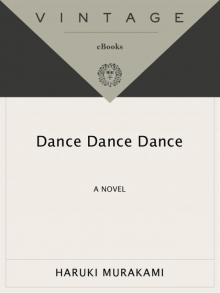 Dance Dance Dance
Dance Dance Dance The Wind (1) and Up Bird Chronicle (2)
The Wind (1) and Up Bird Chronicle (2)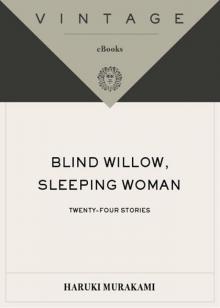 Blind Willow, Sleeping Woman
Blind Willow, Sleeping Woman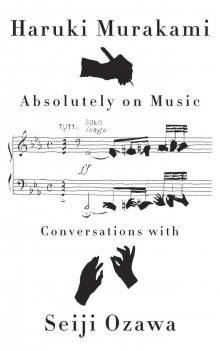 Absolutely on Music: Conversations With Seiji Ozawa
Absolutely on Music: Conversations With Seiji Ozawa Norwegian Wood
Norwegian Wood South of the Border, West of the Sun
South of the Border, West of the Sun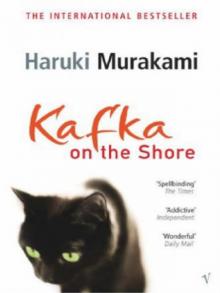 Kafka on the Shore
Kafka on the Shore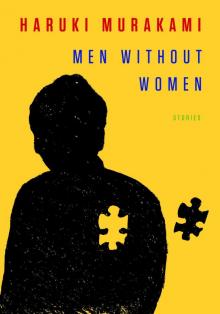 Men Without Women
Men Without Women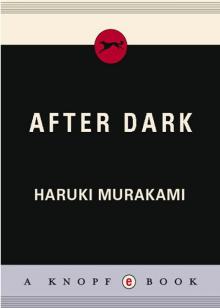 After Dark
After Dark Hard-Boiled Wonderland and the End of the World
Hard-Boiled Wonderland and the End of the World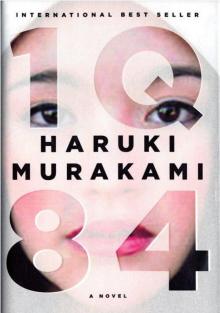 1q84
1q84 The Wind-Up Bird Chronicle
The Wind-Up Bird Chronicle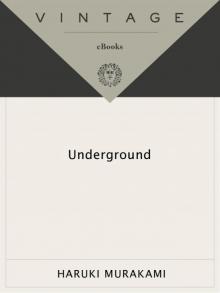 Underground: The Tokyo Gas Attack and the Japanese Psyche
Underground: The Tokyo Gas Attack and the Japanese Psyche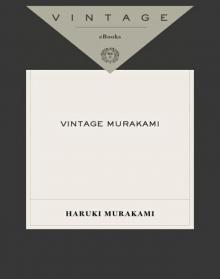 Vintage Murakami
Vintage Murakami The Elephant Vanishes: Stories
The Elephant Vanishes: Stories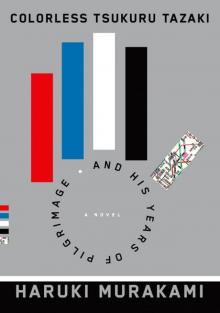 Colorless Tsukuru Tazaki and His Years of Pilgrimage
Colorless Tsukuru Tazaki and His Years of Pilgrimage First Person Singular
First Person Singular After the Quake
After the Quake A Wild Sheep Chase
A Wild Sheep Chase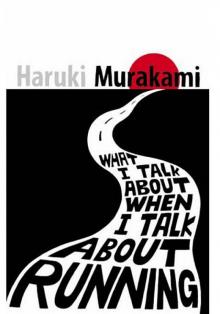 What I Talk About When I Talk About Running
What I Talk About When I Talk About Running Birthday Girl
Birthday Girl The Elephant Vanishes
The Elephant Vanishes Norwegian Wood (Vintage International)
Norwegian Wood (Vintage International) Wind/Pinball
Wind/Pinball Norwegian Wood Vol 1.
Norwegian Wood Vol 1. Underground
Underground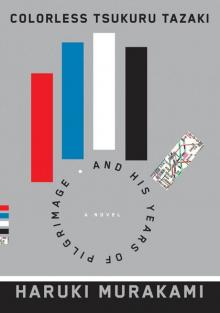 Colorless Tsukuru Tazaki and His Years of Pilgrimage: A novel
Colorless Tsukuru Tazaki and His Years of Pilgrimage: A novel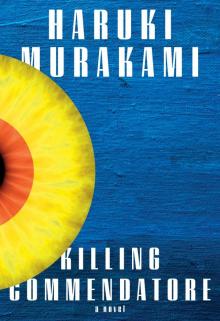 Killing Commendatore
Killing Commendatore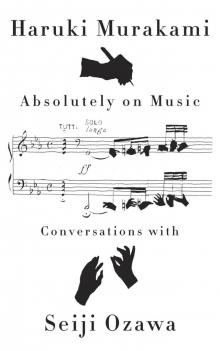 Absolutely on Music
Absolutely on Music